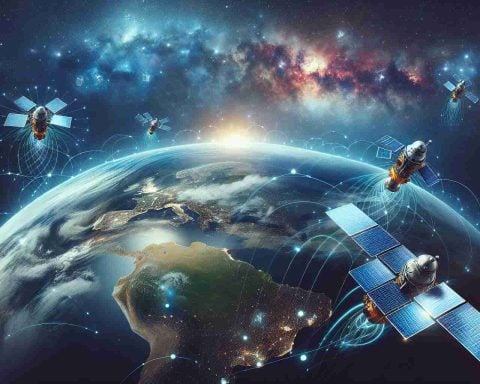- AI enables rapid analysis of large datasets, aiding in the identification of potential crash sites in the Indian Ocean.
- Advanced deep learning algorithms integrate diverse data, crafting a clearer narrative of MH370’s last known movements.
- AI’s predictive capabilities enhance aviation safety by anticipating and preventing future crises.
- Sustainable search methods emerge as AI reduces the need for exhaustive resource-heavy operations, minimizing environmental impact.
- AI is poised to enhance aviation safety protocols and real-time monitoring systems.
The mysterious disappearance of Malaysia Airlines Flight 370 has baffled the world since March 8, 2014. Nearly a decade later, the potential to unravel this aviation enigma might lie within the remarkable advancements in artificial intelligence (AI) and machine learning.
AI Revitalizes Aviation Search Efforts
AI is now transforming how investigators tackle such perplexing puzzles. Advanced deep learning algorithms can analyze massive datasets with astonishing speed and precision, a feat unimaginable with traditional methods. This capability empowers experts to potentially identify wreckage sites in the vast expanses of the Indian Ocean more effectively.
A key strength of AI lies in its ability to synthesize data from various sources—satellite imagery, oceanic current models, and seismic activity. This seamless integration crafts a compelling narrative of MH370’s last movements, breathing new life into search areas previously deemed unyielding.
Enhancing Aviation Security
Beyond decoding past mysteries, AI’s implementation in aviation heralds enhanced safety measures. Predictive models fueled by AI could foresee and prevent future crises, elevating passenger security and reinforcing the commitment to safer skies.
Sustainability Benefits
Moreover, AI-driven investigations offer a more sustainable approach. By honing in on specific locations with greater precision, the reliance on resource-heavy search operations decreases, significantly reducing the ecological impact of such missions.
Looking Ahead
As AI continues to evolve, its influence over the aviation industry is set to grow, potentially becoming a cornerstone in developing stringent safety protocols and real-time monitoring systems. The convergence of this cutting-edge technology with aviation promises not only to provide answers to unresolved mysteries like MH370 but also to forge a safer and more efficient future.
AI Breakthroughs: Solving the Unsolvable Mystery of Flight MH370
Harnessing AI for Aviation’s Greatest Mystery
The disappearance of Malaysia Airlines Flight 370 remains one of aviation’s most puzzling enigmas. Recent advancements in artificial intelligence hold promise for unraveling this mystery by analyzing comprehensive datasets with unmatched accuracy. Deep learning algorithms can synthesize information from satellite imagery, oceanic patterns, and seismic data, potentially leading to breakthrough discoveries in locating the wreckage.
Significant Developments in Aviation Security
The integration of AI into aviation is not just about solving past mysteries; it plays a pivotal role in enhancing flight safety. AI-driven predictive models can potentially foresee and avert crises, putting passenger safety at the forefront. This reinforces aviation’s dedication to maintaining the highest safety standards.
Environmental and Operational Sustainability
Incorporating AI in aviation search efforts significantly diminishes environmental impact by targeting search operations more effectively. This precision minimizes resource utilization and lowers the ecological footprint of extensive search missions, underscoring the importance of sustainable practices in aviation.
Key Questions About AI’s Role in Aviation
1. How can AI improve the search for Flight MH370?
AI’s capacity to process and analyze large volumes of data from multiple sources in real-time offers new hope in identifying the exact location of MH370’s debris. By simulating ocean currents and leveraging satellite technology, AI narrows down search areas, making the operation both efficient and environmentally conscious.
2. What are the implications of AI on aviation security?
AI’s introduction into aviation security primarily focuses on predictive threat assessment and crisis prevention. AI can analyze flight patterns, passenger behaviors, and mechanical performance to identify potential risks before they escalate, enabling preemptive action to safeguard passengers and crews.
3. How does AI contribute to the sustainability of search operations?
AI minimizes the environmental impact of search operations by focusing resources on probable locations rather than expansive, resource-heavy exploratory missions. This targeted approach reduces fuel consumption and other environmental tolls traditionally associated with large-scale search efforts.
For more information on AI and its applications in aviation, you can visit Airbus and Boeing to learn about the latest technological advancements and industry insights.



















